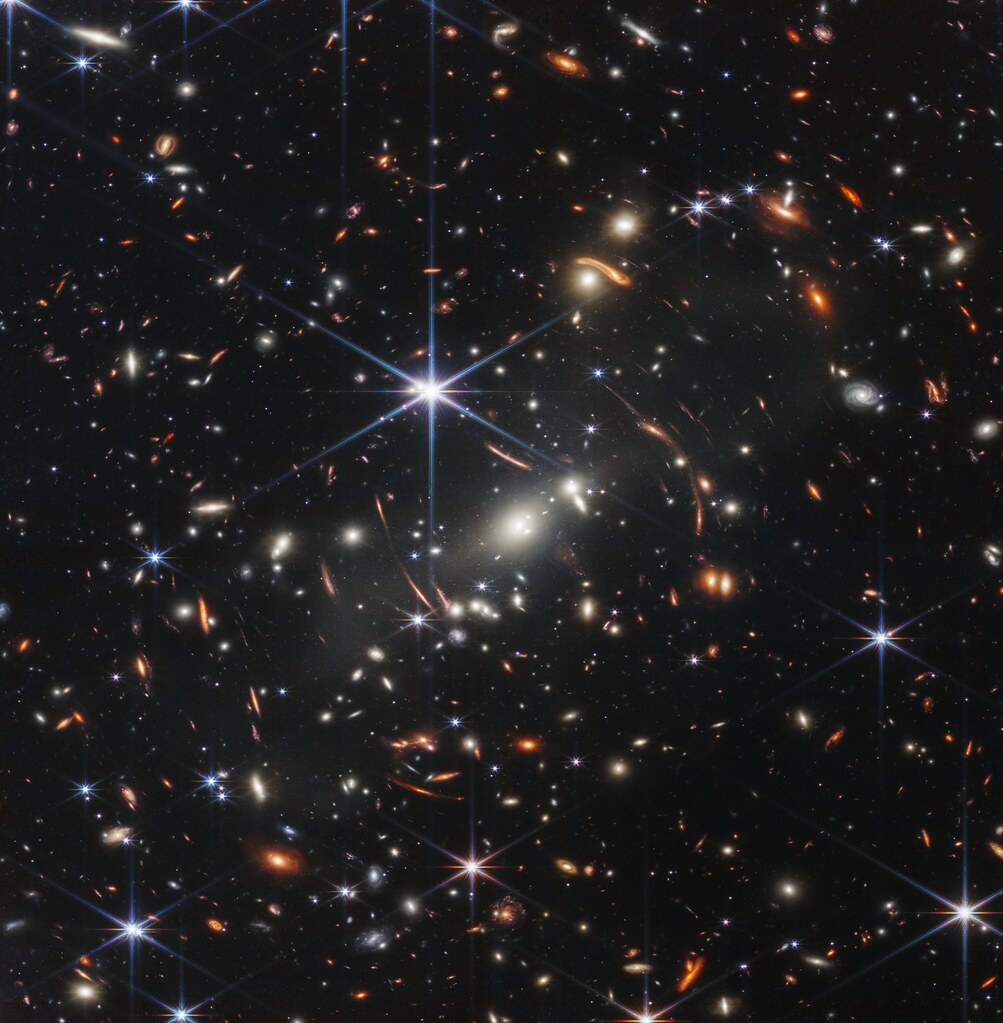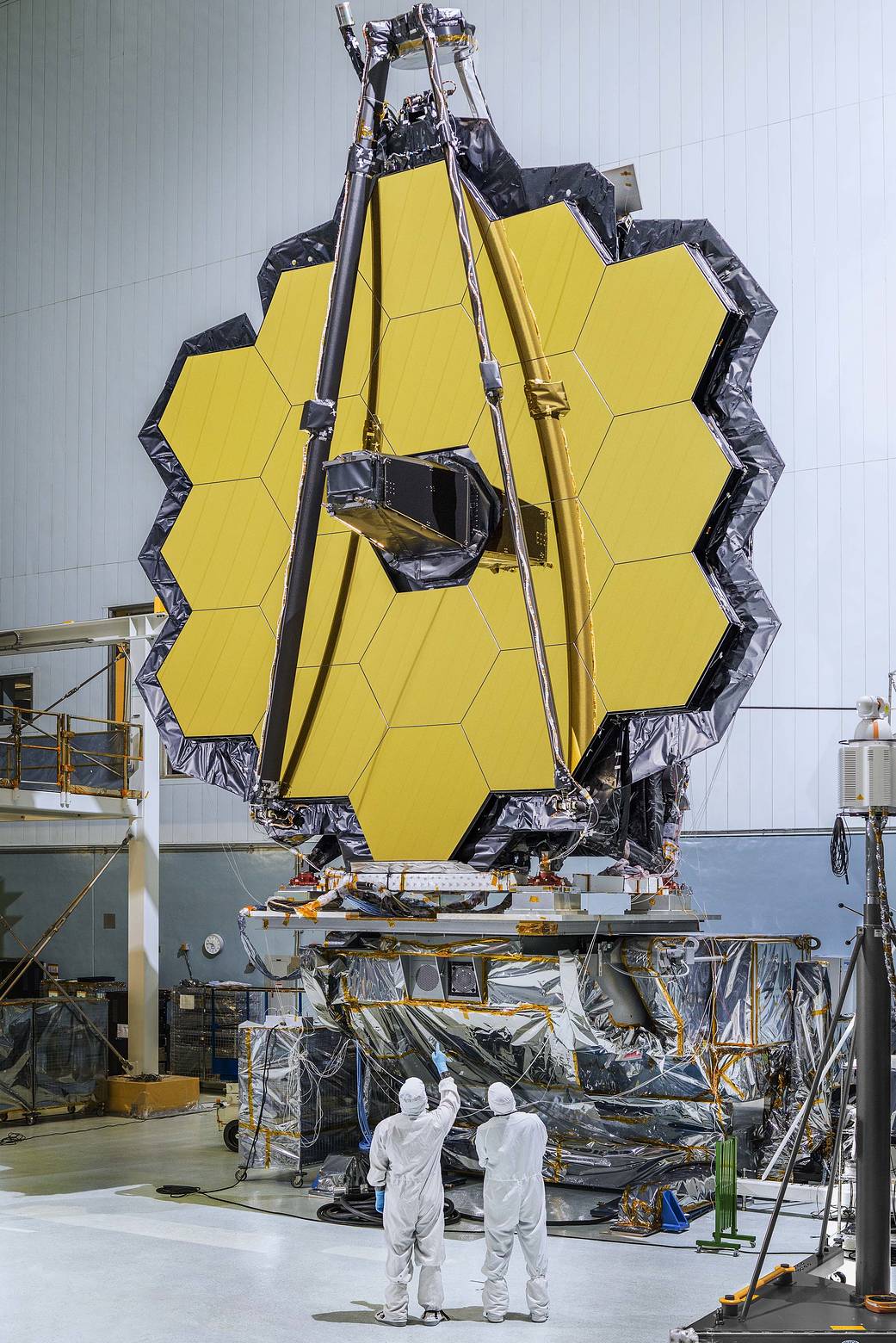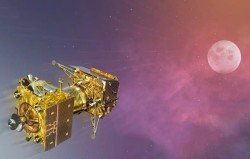Science & Technology

The first full-colour image from all new James Webb Space Telescope (JWST) is out.
It was officially released by US President Joe Biden during a White House briefing on Monday. The image, what NASA calls a sneak peek into wider range of images which are going to be released on Tuesday, is an image of galaxy clusters named SMACS 0723.
"These images are going to remind the world that America can do big things, and remind the American people - especially our children - that there's nothing beyond our capacity," Biden said in the briefing.
“We can see possibilities no one has ever seen before. We can go places no one has ever gone before.”
What is in the picture?
SMACS 0723 is a massive foreground galaxy clusters, which magnifies and distorts the light of objects behind them. The clusters permits a deep field view into both the extremely distant and intrinsically faint galaxy populations over 13 billion years old compared to 13.8 billion years, the age of the universe.
The clusters itself is 4.6 billion years old, but with the shear mass can ‘gravitationally lens’ (similar to a zoom lens in camera) can bring the old and distant objects nearly 800 million years from the Big Bang into field of view.
The image taken by Near-Infrared Camera (NIRCam), one of its instrument suites, has brought galaxies and star clusters from very early universe into sharp focus.
"Webb's First Deep Field is not only the first full-color image from the James Webb Space Telescope, it’s the deepest and sharpest infrared image of the distant universe, so far. This image covers a patch of sky approximately the size of a grain of sand held at arm’s length. It’s just a tiny sliver of the vast universe," said NASA Administrator Bill Nelson.
Being 100 times more sensitive than its 30-year-old predecessor, the Hubble space telescope, JWST produced the image in its deep observation of 12.5 hours using NIRCam. To produce the picture of same part of the universe, Hubble took weeks, and still could not meet the resolution.
What is JWST?

Webb is an international collaboration between NASA and its partners, ESA (European Space Agency) and the Canadian Space Agency.
The much hyped $10 billion space telescope was more than two decades in making and was launched aboard an ESA Ariane 5 rocket from Europe's Spaceport located near Kourou, French Guiana, northern coast of South America in Christmas day of 2021.
The telescope is now on its orbit around the sun, 1.5 million kilometres from the earth, on what scientists call ‘second Lagrange Point’, or L2.
Webb, which NASA believes as a feat of human ingenuity, is the scientific successor to the much-celebrated Hubble and Spitzer space telescopes and will look into infrared and far infrared spectrum of the electromagnetic wave.
With its 18 hexagonal, gold plated beryllium metal mirrors, and delicate thin sheets of sun shields that took more than six months to unfold, calibrate and align, now JWST has begun its look into the past.
Webb is poised to reveal the secrets of the Universe: how did the universe cool and made black holes, galaxies, stars and planets. Not only clarifying the already known things, it will help scientists discover various unknowns about the universe, as John Mather, Webb senior project scientist puts it.
1657626763.gif)
What's more?
NASA will release more images of Webb’s first observations Tuesday~8 pm in NASA’s live broadcast which were selected by an international committee of representatives from NASA, ESA, CSA, and the Space Telescope Science Institute:
Carina Nebula and Southern Ring Nebula:
Carina is one of the largest and brightest nebulae (cloud of dust and gases where new stars form), approximately 7600 light years away. It is considered to be home to massive stars several times larger than the sun.
While, Southern Ring Nebula is a planetary nebula, a cloud of dust and gases, expanding out of a dying star. It is located 2000 light years from the Earth;
WASP-96 b (spectrum):
The newly discovered planet, outside the solar system in 2014, is located nearly 1,150 light years away from the Earth. This will be Webb’s first spectrographic analysis which helps in distinguishing the chemical composition of the exoplanet, roughly half the size of Jupiter.
Stephan’s Quintet:
It is a compact galaxy group discovered in 1877, located 290 million light-years away. It has always intrigued astronomers for the ‘cosmic dance’ between four of the five galaxies in the cluster.
Besides these, more pictures of SMACS 0723, the same cosmic object that Biden released yesterday will follow tonight.
Expressing the excitement of whole humanity John Mather, Webb’s senior project scientist said: “Scientists are thrilled that Webb is alive and as powerful as we hoped, far beyond Hubble, and that it survived all hazards to be our golden eye in the sky.”
Programme Scientist for the Webb project, Dr Eric Smith said to BBC that, he thought the public had already grasped the significance of the new telescope.
JWST eyes for the largest objects in the Universe, but Large Hardon Collider at CERN which cost 5 billion is looking for the smallest objects that make the Universe.






